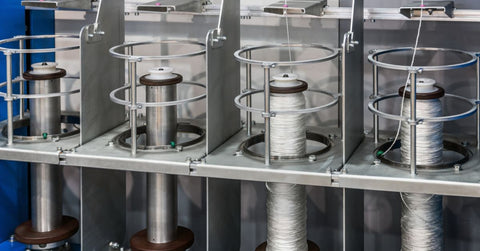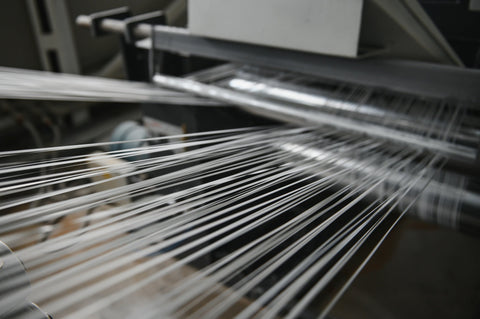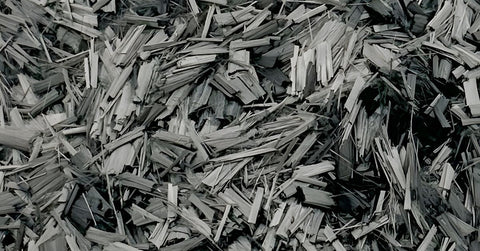From protective gear on the front lines to aerospace parts flying across the stratosphere, high-performance textiles are pivotal to some of the most demanding industries. These textile products endure extreme environments, delivering unmatched durability and functionality when it matters most. But the question remains: what makes high-performance textiles so tough?
The answer lies in an intricate combination of cutting-edge materials and engineering precision. Designed to excel under pressure, high-performance textiles are a triumph of innovation. They’re built to resist wear, withstand extreme conditions, and enable groundbreaking applications. Keep reading as we take you behind the science and their manufacturing processes, uncovering the extraordinary features that make these textiles indispensable.
What Are High-Performance Textiles?
High-performance textiles are specially engineered materials that provide superior functionality and durability. These textiles, such as braids, ropes, cords, and fabrics, are often made from advanced fibers or composites, offering exceptional strength, resistance to extreme temperatures, chemical stability, and enhanced flexibility. They are purpose-built to meet the demanding requirements of industries such as aerospace, health care, automotive, and sports, where commodity textiles would typically fall short.
The Science Behind the Strength
The toughness of high-performance textiles is no accident. It’s the result of meticulous engineering at the molecular level, combined with innovative materials and treatments. Here’s how science plays a critical role in their development.
Advanced Fiber Materials
A key contributor to the strength of high-performance textiles is the advanced fibers they incorporate. Materials like Kevlar®, Dyneema®, and carbon fibers boast exceptional strength-to-weight ratios.
For example, manufacturers use Kevlar in everything from bulletproof vests to industrial conveyor belts because of its impressive tensile strength and impact resistance. These fibers are designed to endure stress and distribute force evenly, making them ideal for applications requiring consistent reliability.
Molecular Structure and Engineering
The molecular arrangement of the fibers also plays a pivotal role in their resilience. High-performance fibers are engineered at the molecular level to have aligned polymer chains that enhance tensile strength.
This alignment creates a structure that is highly resistant to stretching, tearing, and deforming under stress. Additionally, the chemical composition of these fibers often includes bonds that resist heat, chemicals, and environmental degradation, ensuring long-term durability.
Coatings and Treatments
Beyond the inherent properties of the fibers, coatings and surface treatments significantly enhance their toughness. Rocket-Fibers applies specialized coatings, such as polyurethane or silicone, to provide water resistance, UV protection, and flame retardancy. These treatments effectively safeguard the textile from environmental factors and enhance its performance for specific use cases such as industrial safety or outdoor gear.

Key Properties That Define Toughness
Several distinct properties are responsible for the exceptional toughness of high-performance textiles. Each one contributes to these textiles’ reputation as some of the most durable materials available.
Tensile Strength
Tensile strength is the maximum amount of force a material can withstand while being stretched or pulled. High-performance textiles excel in this area thanks to their engineered fibers and optimized molecular structures. This is particularly important in applications like ropes, nets, and materials used in climbing gear.
Abrasion Resistance
High-performance textiles must endure intense wear and tear. Whether they’re scraped against rough surfaces or subjected to continuous friction, their abrasion resistance ensures they remain intact and functional. This quality is crucial for military uniforms and protective clothing used in demanding environments.
Thermal and Chemical Resistance
For industries that require materials to perform in extreme conditions, thermal and chemical resistance are nonnegotiable. High-performance textiles can withstand both high and low temperatures, as well as exposure to corrosive chemicals, without deteriorating. This makes them indispensable in aerospace and industrial applications.
High Strength and Light Weight
One of the standout features of high-performance textiles is their ability to combine lightweight construction with impressive strength. This property is vital in industries such as aviation, where reducing weight without compromising safety or durability is a top priority.
Manufacturing Techniques That Boost Toughness
Creating high-performance textiles goes far beyond traditional weaving and knitting. Manufacturers utilize innovative techniques to ensure these materials meet the highest standards of strength and durability.
Weaving and Knitting Innovations
Advanced weaving and knitting methods allow manufacturers to enhance the mechanical properties of textiles. For instance, cross-weaving patterns can increase flexibility without sacrificing strength. Similarly, seamless knitting techniques create garments and materials that are free from weak points, ensuring better performance under stress.
Composite Integration
High-performance textiles often integrate composite materials to further boost toughness. By combining textiles with materials like metal or polymer matrix composites, manufacturers create hybrid products that deliver superior performance. This is commonly seen in the aerospace and automotive industries.
Quality Control and Testing
Rigorous quality control and testing are essential to ensure the final product meets industry standards. High-performance textiles undergo extensive evaluations for properties including tensile strength, durability, and resistance to environmental factors. These tests identify weaknesses and guarantee reliability in real-world scenarios.

Real-World Applications of High-Performance Textiles
These textiles aren’t theoretical; they’re actively transforming industries worldwide. We’ve mentioned a few industries throughout this guide, but here are some more specific examples of where these textiles are transforming products.
Aerospace and Automotive
The aerospace and automotive industries demand materials that are lightweight yet exceptionally strong. These industries use high-performance textiles in everything from aircraft cables to automotive interiors. High-performance fibers can improve fuel efficiency and safety without adding unnecessary weight. Composite materials made with these fibers create safer and more efficient vehicles and aircraft.
Military and Defense
For military and defense applications, toughness is a top priority. Body armor, helmets, and tactical gear use high-performance textiles to protect personnel in life-threatening situations. Their ability to withstand impacts, abrasions, and extreme conditions ensures they meet the rigorous demands of military operations.
Sports and Outdoor Gear
High-performance textiles are a staple in sports and outdoor gear. From waterproof jackets to camping cords, these materials are engineered to withstand challenging environments while providing functionality. Their lightweight construction is ideal for athletes and adventurers who need maximum mobility.
Industrial and Construction
Safety gear used in industrial and construction environments must adhere to strict standards. Items such as protective gloves, harnesses, and fire-resistant clothing use high-performance textiles to protect workers and enhance workplace safety.
Medical and Health Care
The medical field also benefits from high-performance fiber products. These textiles are used in the production of advanced wound dressings, surgical gowns, and other medical devices that require durability, sterility, and biocompatibility.
What makes high-performance textiles so tough? It’s a combination of cutting-edge materials, scientific innovation, and meticulous manufacturing techniques. Understanding the science and applications of these materials is essential for staying competitive in a rapidly evolving market.
If you’re ready to explore the possibilities of high-performance textiles, now is the time to invest in solutions that deliver unmatched toughness and versatility. Choose Rocket-Fibers for premium specialty fibers!



